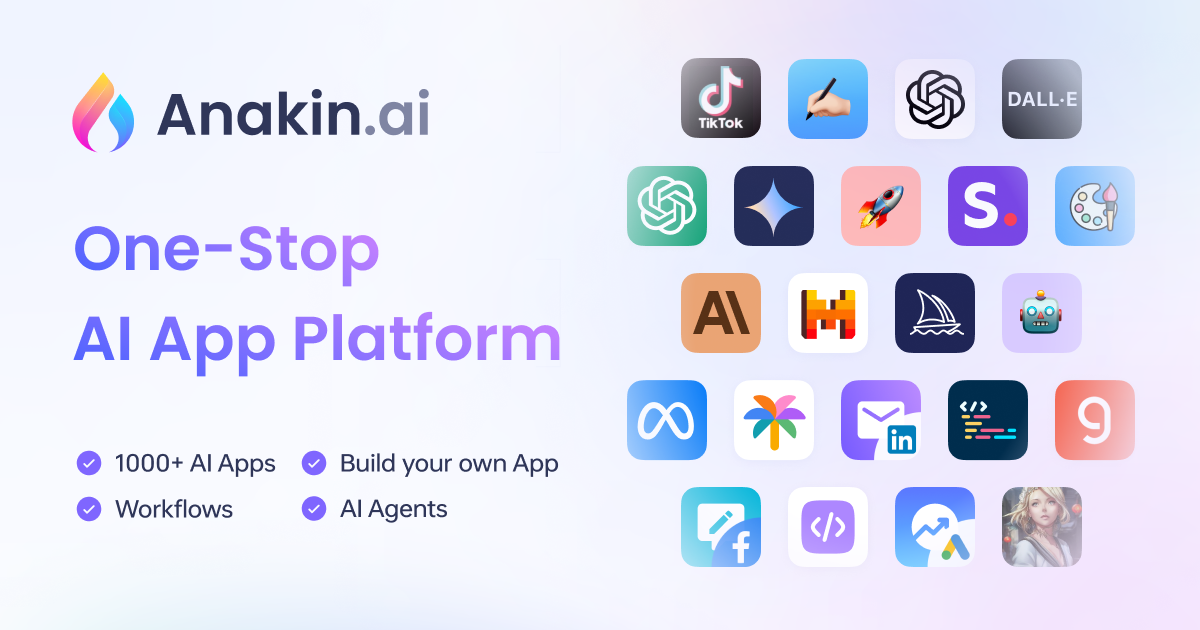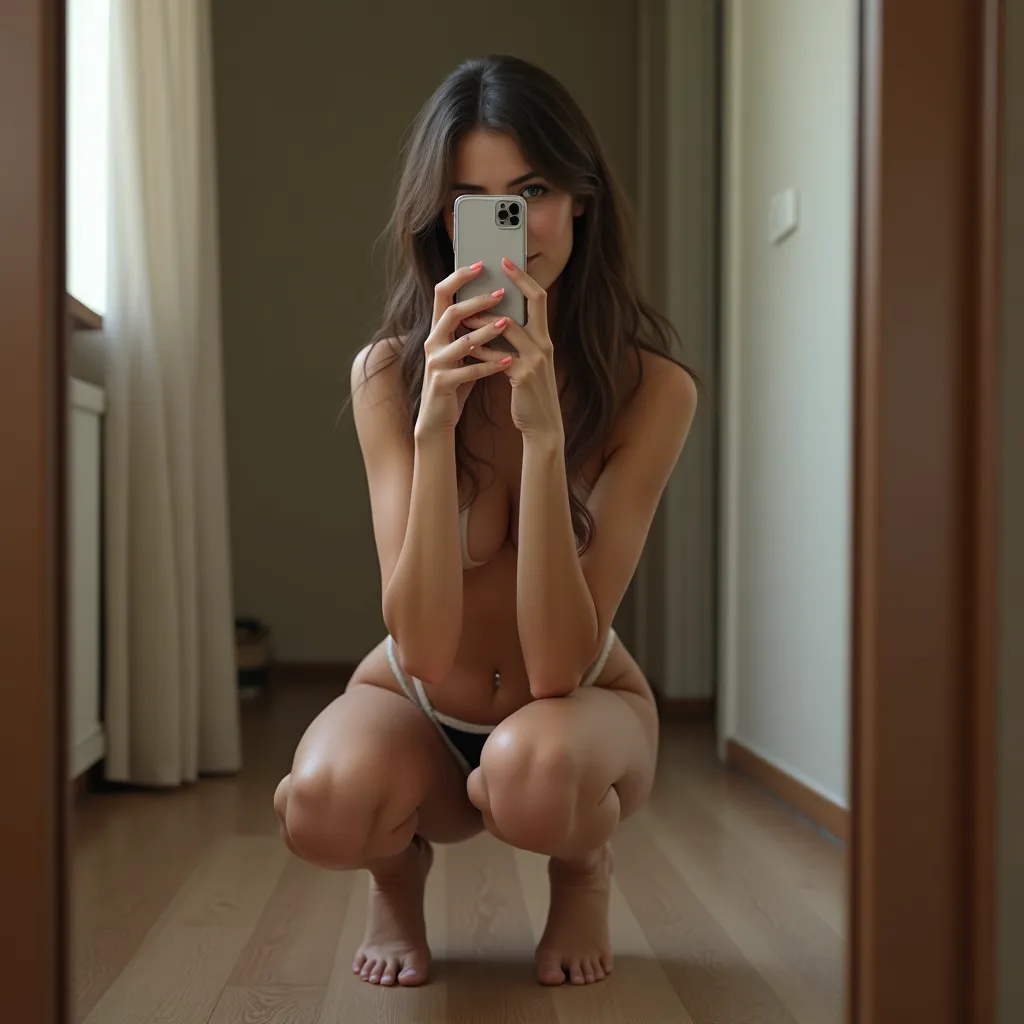In recent weeks, artificial intelligence has revolutionized creative media. With GPT-4o’s integration of image generation capabilities, developers and artists now have powerful new tools at their fingertips. But how does GPT-4o handle NSFW content and nudity? This guide takes a practical and suggestive look at the issue, helping you navigate the technical, ethical, and creative considerations when working with AI-generated imagery.
Want to Use Minimax Hailuo AI, Kling AI for Video Generation, but don't want to pay overpriced subscriptions?
Want to Use Flux, Google Imagen 4, Recraft... to create Photorealistic Images in one place?
Want to Use OpenAI's o3-pro, Claude 4, Google Gemini 2.5... everything, but with ONE Subscription?
Subscribe to Anakin AI to use them all!





Understanding the Basics
What Is NSFW Content?
NSFW stands for "Not Safe for Work" and refers to content that might be inappropriate for professional or public settings. This category often includes explicit sexual material, graphic violence, or other mature themes. However, nudity itself isn’t inherently NSFW. In many cultural and artistic contexts, nudity is an important form of expression and has been celebrated throughout history.
The Role of GPT-4o’s Image Generation
GPT-4o offers advanced image generation capabilities that transform your textual prompts into visual art. The system is designed to interpret creative language and generate images that fit the style and context you describe. Whether you’re looking to craft a piece reminiscent of classical art or explore modern interpretations of the human form, GPT-4o can serve as an inspiring creative partner—all while adhering to built-in safety guidelines.
While many AI art platforms shy away from or outright ban adult content, FluxNSFW.ai places it front and center, with its most emphasized and powerful feature being the creation of incredibly detailed Deep Nudes. The platform is specifically engineered to excel at generating explicit nude imagery from text prompts, allowing users to craft anatomically precise and realistic visuals without the frustrating filters and censorship common elsewhere. This mastery over adult-themed content means that for creators focused on exploring the human form or other NSFW concepts, FluxNSFW.ai stands out as a premier tool dedicated to delivering truly unrestricted and uncensored results.


Technical Capabilities and Limitations
How It Works Under the Hood
When you input a prompt into GPT-4o, the system goes through a few key steps:
- Prompt Analysis: The AI scans your description for key phrases and context. It identifies elements that may be explicit and determines whether the content is intended to be artistic or explicit.
- Contextual Understanding: GPT-4o uses its training to differentiate between artistic nudity (like the human form in a classical painting) and explicit sexual content.
- Content Filtering: Built-in safety mechanisms ensure that the generated images remain tasteful, filtering out content that might violate guidelines.
Practical Realities
Even if you request an image that includes nudity, several practical points are worth noting:
- Art Over Explicitness: GPT-4o is optimally tuned to generate artful and tasteful images. Requests for "classical nude painting" will often trigger outputs that evoke a sense of history and elegance rather than explicit content.
- Language Matters: The wording of your prompt plays a significant role in the outcome. Descriptive, respectful language can help bypass overzealous filters, while overly explicit terms may trigger stricter moderation.
- Iterative Process: Don’t be disheartened if your first prompt doesn’t yield the ideal result. Adjusting your language and trying different phrasings is part of the creative process.
Creative and Ethical Considerations
Embracing Artistic Freedom
Art has long been a space where boundaries are pushed and expressions of the human form are celebrated. With GPT-4o, you have the opportunity to explore new artistic territories:
- Experimentation: Use GPT-4o to experiment with different styles—be it surreal, abstract, or classical. The AI’s output can serve as a foundation for further creative exploration.
- Iteration: Generate several versions of an image to find the one that best matches your vision. Each iteration can provide new insights into style and composition.
- Innovation: Combine traditional art concepts with modern AI techniques. GPT-4o helps bridge historical art styles with contemporary digital approaches.
Ethical Responsibilities
While creative freedom is important, ethical considerations cannot be ignored:
- Respect and Dignity: Always ensure that your artistic representations of nudity treat the human form with respect. Avoid objectifying or exploiting imagery.
- Cultural Sensitivity: Understand that different cultures have varying thresholds for what is deemed acceptable. Your audience’s perspective matters.
- Consent and Privacy: Even though the images are generated by AI, be mindful if your work is inspired by real-life references or involves likenesses of individuals.
- Preventing Misuse: The safeguards built into GPT-4o are there to prevent harm. They help ensure that the imagery remains tasteful and that the technology is not used for creating harmful content.
By balancing creative exploration with ethical responsibility, you contribute to a culture of respectful and innovative digital art.
Practical Tips for Using GPT-4o for Artistic Nudity
1. Crafting Your Prompt
Your prompt is your primary tool when using GPT-4o. Here are some strategies:
- Be Descriptive Yet Respectful:
Instead of requesting “nude photos,” try phrases like “classical nude painting” or “tasteful portrayal of the human form in a Renaissance style.” - Include Context:
Adding contextual details like the era, art style, or mood (e.g., “soft lighting,” “subtle shadows”) can guide GPT-4o toward the artistic vision you want. - Avoid Trigger Words:
Steer clear of overtly explicit language. Experiment with synonyms and use phrases that evoke the elegance of artistic nudity.
2. Experimenting with Style and Detail
Once you have a basic prompt:
- Define the Style:
Specify if you want the image in the style of a particular art movement, such as impressionism, classical realism, or even a modern digital art style. - Play with Composition:
Mention details about the arrangement, such as “balanced composition” or “focused on the interplay of light and shadow.” - Embrace Minimalism or Detail:
Decide whether you want a minimalist rendition that captures the essence of the human form, or a highly detailed work that emphasizes texture and nuance.
3. Iteration and Refinement
Creativity often involves a bit of trial and error:
- Multiple Variants:
Generate several images based on varying prompts. Compare the outputs to see which aligns best with your vision. - Feedback Cycle:
Analyze what works and what doesn’t. Adjust your prompt language accordingly. - Learn from the Community:
Engage with other artists and designers who use GPT-4o. Sharing tips and techniques can enhance your approach and spark new ideas.
4. Practical Use Cases
Consider how GPT-4o can be integrated into your creative workflow:
- Digital Art Portfolios:
Use GPT-4o to create initial drafts or conceptual pieces that can later be refined manually. - Graphic Design Mockups:
Incorporate tasteful artistic nudity into storyboards or promotional materials, ensuring that the images complement a narrative or theme. - Educational Tools:
Educators can utilize AI-generated art as visual aids to discuss the history and evolution of artistic representations of nudity. - Inspiration Boards:
Create mood boards or inspiration libraries that combine AI-generated images with traditional art, fostering a dynamic creative environment.
Alternatives and Complementary Approaches
While GPT-4o is a powerful tool, it’s just one part of a broader artistic ecosystem:
- Explore Open-Source Platforms:
Tools like Stable Diffusion offer customizable options that allow for a deeper level of control over artistic outputs. Using these alongside GPT-4o can broaden your creative toolkit. - Hybrid Techniques:
Combine AI-generated images with traditional digital editing software. This allows you to fine-tune details, adjust aesthetics, or merge multiple art styles in post-production. - Collaborative Projects:
Team up with other creatives to blend human insight with AI efficiency. Collaborative efforts can result in richer interpretations and more compelling works of art.
The integration of various tools ensures that, even if one system has limitations, your overall creative process remains flexible and dynamic.
Striking the Balance Between Creativity and Control
Purposeful Representation of the Human Form
Artistic nudity has always been about more than just the visual—it’s a celebration of the human body as a source of beauty, vulnerability, and expression. With GPT-4o, you have the opportunity to create works that celebrate these aspects without crossing into exploitative territory. Focus on:
- Intent:
Ensure that your image carries a clear artistic or narrative intent. Aim to explore themes like beauty, form, and human expression. - Execution:
Use language that guides GPT-4o toward producing imagery that is tasteful and aligned with your creative vision.
Adjusting Your Creative Workflow
Incorporating AI into your artistic process may require a few adjustments:
- Plan for Revisions:
Recognize that initial outputs may need refinement. Factor in time for prompt adjustments and iterations. - Have Backup Plans:
If one approach doesn’t yield the desired result, be ready to switch up your method or try another tool. - Respect the System:
Understand that the safety filters and guidelines are in place to maintain a respectful and legal environment for all users.
By adapting your workflow to include iterative testing and creative flexibility, you can harness the full potential of GPT-4o while ensuring that your work remains both innovative and respectful.
Looking Towards the Future
Evolving Capabilities of AI Art
The field of AI-generated art is evolving rapidly. Future developments might include:
- Enhanced Contextual Filters:
More advanced systems that can fine-tune the balance between artistic expression and explicit content. - User-Defined Safety Parameters:
Greater customization options that allow users to define the boundaries of acceptable content while remaining within ethical standards. - Interactive AI Collaboration:
Tools that guide you through the creative process, suggesting modifications to your prompts and helping refine your vision in real time.
Empowering Creative Communities
As these tools become more refined, they promise to democratize art even further:
- Bridging Digital and Traditional Media:
AI-generated drafts can serve as the starting point for physical artworks, merging the best of both worlds. - Fostering Innovation:
The fusion of AI with human creativity will continue to drive new art forms, encouraging experimentation and collaboration. - Building Communities:
Sharing techniques, successes, and even failures with peers can lead to a richer collective understanding of how best to use tools like GPT-4o for responsible and groundbreaking creative work.
Conclusion
GPT-4o’s image generation capabilities open up a world of possibilities for creating artistic representations of nudity. By understanding the system’s technical workings, carefully crafting your prompts, and balancing creative exploration with ethical responsibility, you can produce images that are both visually striking and respectful of artistic traditions.
The key is to approach the process with a blend of innovation and practicality—experiment with different styles, iterate on your ideas, and always be mindful of the context and audience for your work. Whether you’re a professional artist, a designer, or just a creative enthusiast, GPT-4o stands ready to be a powerful partner in your artistic journey.
Embrace the challenge, refine your techniques, and let your creativity flourish responsibly in this dynamic intersection of AI and art.




